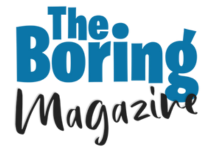A few weeks ago, I got an email from a stranger.
It wasn’t flashy. No fancy graphics. No dramatic subject line. Just a plain text email from a founder looking for partnerships. And guess what? I replied.
That message did everything right. It was short, clear, and focused on me—not them. It stood out not because it screamed, but because it spoke.
In 2025, cold outreach is far from dead. But the rules have changed. What worked three years ago feels robotic now. People are tired of “quick bumps” and fake personalization.
So what’s actually working?
I’ve reviewed hundreds of emails, talked to outreach pros, and run plenty of A/B tests myself. Here’s what’s clicking in the real world—and how you can get more replies this year.
1. Write Like A Real Person
Automation is everywhere. And people can feel it.
One founder told me he replies only to emails that feel human. “If it looks like AI wrote it, I delete it,” he said. “If it feels like a person, I’m curious.”
This means:
- Use casual, natural language.
- Avoid templates that sound like templates.
- Mention something real and specific.
Here’s a bad example: “Hi [First Name], I came across your profile and wanted to connect. Let’s hop on a quick call.”
Compare it to this: “Hey Josh, saw your post about remote teams—super relatable. We tried async standups too. Quick q: have you looked into tools that streamline client updates?”
Which one would you reply to?
2. Get To The Point Fast
People don’t read emails. They skim.
You have 3 seconds to hook them. That’s it. No warm-up paragraphs. No five-sentence intros. Just give them a reason to keep reading.
Here’s what works well right now:
- Start with relevance: Show why you’re reaching out.
- Follow with value: Make it about them.
- End with clarity: Ask something simple and easy to respond to.
I call it the RVC method: Relevance, Value, Clarity.
Let’s break that down with an actual example:
Subject: Improving your onboarding flow
Hey Sarah, noticed you’re hiring a new support team. We just helped a startup reduce onboarding time by 40% using a self-serve demo. Think it could fit your flow? Want a quick walkthrough?
No fluff. No pressure. Just clear intent.
3. Personalization Is About Insight, Not Tokens
In 2022, using someone’s first name felt like personalization. Not anymore.
Today, it’s about showing you actually know them. That means referencing something specific: a recent post, a product launch, a job change, or even a mutual connection.
One sales rep told me his best-performing email this year was just 60 words long. But it had one sentence that hit home: “Saw you hired a VP of RevOps—curious how that’s changing your tech stack.”
That kind of detail makes people pause. It shows care.
Before you send anything, ask: Does this prove I know them? If the answer is no, you’re not ready to hit send.
4. Use Tools, But Use Them Smartly
Yes, you can still use automation. But the key is to blend it with a personal touch.
For example, use outreach tools to send at scale—but write every message like it’s one-on-one. Use snippets only if they add context, not if they just save time.
Also: clean formatting matters. A messy email looks lazy. One simple way to stay professional? Use an email signature generator to make your sign-off look clean, consistent, and credible.
Your signature is part of your first impression. Make it count.
5. Subject Lines That Spark Curiosity
Subject lines still matter—a lot. But tricky wordplay or fake urgency won’t cut it.
Instead, think curiosity + relevance. That’s the winning combo in 2025.
Here are five subject line formats that are getting great open rates right now:
- “Quick idea for [topic they care about]”
- “Saw your [specific project/post]”
- “[Mutual connection] mentioned you”
- “Question about [their company/product]”
- “Thoughts on [trending topic in their space]”
These work because they sound like real conversations. They hint at value without overselling it.
Don’t overthink it. Just ask: Would I open this myself?
6. Make Your Ask Effortless
People ignore unclear asks. Or complex ones.
Want more replies? Keep it simple. Ask for just one thing. And make that one thing easy to say yes to.
Instead of: “Let me know if you’d like to explore ways we can work together.”
Try: “Want me to send a quick demo?”
Or: “Can I send a one-pager?”
Better yet, end with a question that feels like it’s their idea: “Would that be useful?”
That small shift turns your message from a pitch into a conversation.
7. Follow Up Without Being Annoying
Most replies come from follow-ups. But most people never follow up—or they do it poorly.
A good follow-up is short, respectful, and adds something new. It’s not just “bumping this up.” It’s giving another angle or value point.
Here are four follow-up formats that actually work:
- “Just wondering if this is still relevant?”
- “Thought this might be useful—[link to relevant resource]”
- “Quick update—we’ve now helped 12 companies in your space”
- “Totally fine if now’s not the right time—just let me know”
Send 2–3 follow-ups max. Then move on. Your energy is better spent starting new conversations than chasing old ones forever.
8. Don’t Sell. Start Conversations
Cold outreach is not about closing the deal in one email. It’s about opening the door.
Think of it like starting a chat at a networking event. You don’t walk up and pitch. You ask a question. You show interest. You let it build.
One marketer told me his rule is: “No call to action until they reply.” That might be extreme, but the point stands—warm them up first.
This works especially well on platforms like LinkedIn too. Comment on something they shared. Then follow up with a message that continues the thread. Less pushy, more natural.
9. Always Be Testing
There’s no perfect script. What works today might flop tomorrow.
The pros are always testing: subject lines, email length, CTAs, sending times. Even the intro sentence can change your response rate.
Start small. Change one thing at a time. Track open rates, replies, and positive outcomes.
Outreach isn’t art—it’s science. And the best scientists experiment often.
10. Respect Their Time (And Inbox)
Above all: be kind.
Everyone is busy. Everyone’s inbox is overloaded. So when you show up, do it with empathy. Be clear. Be respectful. And if they don’t reply, don’t take it personally.
Also, make sure you’re reaching out to the right person. Don’t spray and pray. Be strategic. Do your homework.
There are tools now that let you find email address by name in seconds. Use them to target your outreach precisely. A well-aimed message beats 100 generic ones.
In Summary = Real Is Winning
The cold outreach that works in 2025 feels… warm.
It’s thoughtful. It’s human. It shows effort and empathy. Whether you’re selling, hiring, fundraising, or just networking—it all comes down to connection.
So next time you write a cold email, imagine saying it face-to-face. If it would feel weird in person, don’t send it.
And remember: the best cold email doesn’t feel cold at all.


